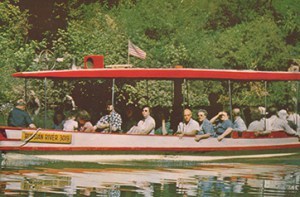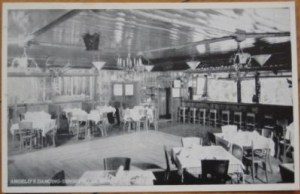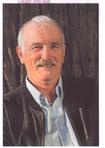John Michael McCarty's Blog, page 18
March 16, 2016
Rio Nido along the Russian River
Rio Nido along the Russian River was my favorite getaway as a kid growing up in San Francisco. Living atop Market Street below Mount Davidson, I would bundle up against the biting fog of summer. It wasn’t until my family made their first journey north thru the Rainbow Tunnel that I knew sun existed during the month of July. It was then that I began to appreciate Mark Twain’s famous quote: “The coldest winter I ever spent was a summer in San Francisco.”
Rio Nido was a special place, not just for the warmth, but for so much more. As I rode my bike up and down the redw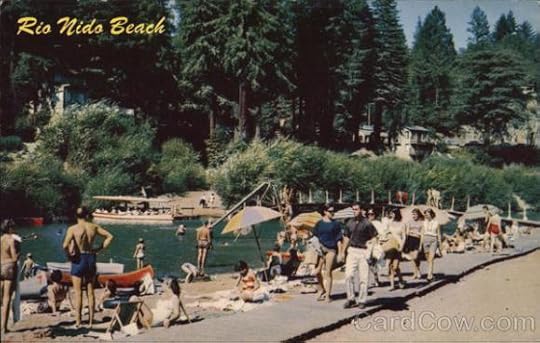 ood canyons, adventure waited around every turn. There were pretty girls and live music and dance halls. Ah, be still my heart. Other pleasures could be indulged as well by venturing into the pinball arcade, outdoor bowling alley, soda fountain or the bingo parlor. My mom would play cards with the ladies in the lounge at the Rio Nido Hotel while my dad took me and my sisters down to the beach. We crossed under the busy River Road via a tunnel, down a steep path to a pedestrian bridge that would take us to a boardwalk and several concession stands where you could buy anything from a Mabs one-piece bathing suit to a cherry snow-cone.
ood canyons, adventure waited around every turn. There were pretty girls and live music and dance halls. Ah, be still my heart. Other pleasures could be indulged as well by venturing into the pinball arcade, outdoor bowling alley, soda fountain or the bingo parlor. My mom would play cards with the ladies in the lounge at the Rio Nido Hotel while my dad took me and my sisters down to the beach. We crossed under the busy River Road via a tunnel, down a steep path to a pedestrian bridge that would take us to a boardwalk and several concession stands where you could buy anything from a Mabs one-piece bathing suit to a cherry snow-cone.
If further excitement was needed, I would board the River Queen and go downstream to Johnson’s Beach and more pretty girls. For more tales of these innocent times, try reading a good book. May I suggest Memories That Linger and Stumptown Daze. Until next time, cheers!
The post Rio Nido along the Russian River appeared first on John McCarty.
March 15, 2016
Russian River Flood of 1986
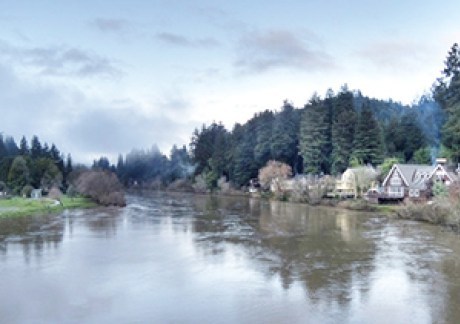
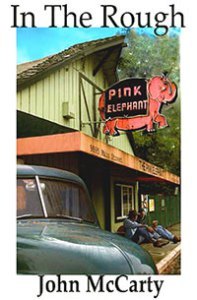
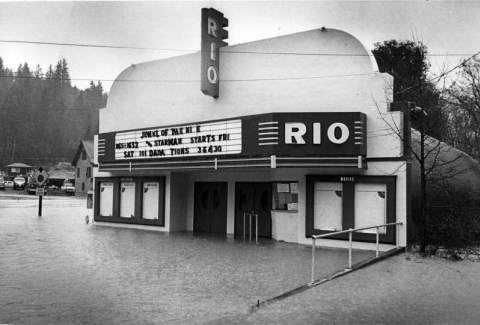 The Russian River flood of 1986 brought both sadness and humor to the scene. One story relates how the Pink Elephant saloon in Monte Rio kept its doors open despite the presence of three feet of muddy water inside. Patrons continued to play a game of pool while in their boats. Others fished from atop bar stools.
The Russian River flood of 1986 brought both sadness and humor to the scene. One story relates how the Pink Elephant saloon in Monte Rio kept its doors open despite the presence of three feet of muddy water inside. Patrons continued to play a game of pool while in their boats. Others fished from atop bar stools.
There were also stories of bewilderment and sadness. The bartender on the night of February 18th, closed the Pink Elephant and tried to walk through the flooded street to his home. However, somewhere along his journey he lost his way and fell into the raging waters and drowned. The family of the deceased complained to the folks at the Guerneville mortuary when their relative appeared in his coffin without his favorite leather jacket as requested. The mortician’s assistant said that the victim arrived from the local authorities without any such apparel. Two weeks later inside the town’s Safeway, one of the family members spotted the son of the mortuary’s owner wearing the leather jacket. A struggle ensued and the treasured item was forcibly returned to the family of the deceased.
Russian River flood, other stories:
People improvised. One teenager somehow secured a weed walker to his surfboard and motored out of the flood. Two other men used dresser drawers like dugout canoes and paddled with their arms to safety. Others were not so lucky. One woman tells of watching flames consume the second floor of her home while the river finished off the first level. Another submerged abode remained aglow, an eerie sight with lights quivering underwater. Locals shopped for necessities, canoeing through the aisles of stores.
And so it was, 1986. Chow, baby.
The post Russian River Flood of 1986 appeared first on John McCarty.
March 9, 2016
Russian River flood of 1986
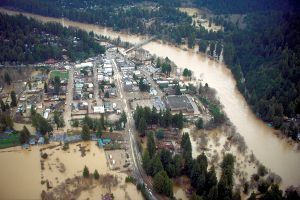 The Russian River flood of 1986 devastated the rural sector of Sonoma County. This year marks its thirtieth anniversary. As a visiting tourist in eighty-six and later as a full-time resident, I have never forgotten the pure power and intimidation of such a force. Vietnam-era vessels with their square bows struggled against the current as they churned upstream looking for stranded residents and dangerous debris. Runaway propane tanks exploded, sending a ball of fire downriver. Mighty redwoods became lodged under the Monte Rio Bridge. Abandoned canoes, patio furniture, vehicles and bits of homes found the backyards of complete strangers. Leroy Robinson, a local businessman, says that the current tore out the bolts to the concrete foundation of his office. The structure plus two of his trucks drifted past Joe Bacci’s century-old lumber yard (just east of the new bridge) where over 20,000 board feet floated away, making navigation hazardous for boats trying to rescue residents from low-lying areas.
The Russian River flood of 1986 devastated the rural sector of Sonoma County. This year marks its thirtieth anniversary. As a visiting tourist in eighty-six and later as a full-time resident, I have never forgotten the pure power and intimidation of such a force. Vietnam-era vessels with their square bows struggled against the current as they churned upstream looking for stranded residents and dangerous debris. Runaway propane tanks exploded, sending a ball of fire downriver. Mighty redwoods became lodged under the Monte Rio Bridge. Abandoned canoes, patio furniture, vehicles and bits of homes found the backyards of complete strangers. Leroy Robinson, a local businessman, says that the current tore out the bolts to the concrete foundation of his office. The structure plus two of his trucks drifted past Joe Bacci’s century-old lumber yard (just east of the new bridge) where over 20,000 board feet floated away, making navigation hazardous for boats trying to rescue residents from low-lying areas.
Flood waters:
The Markarian brothers, owners of the popular River Club tavern on the east end of Main Street in Guerneville, testified that the turbulent waters reached bar-level, putting a damper on the Valentine Day weekend festivities. Fred MacMurray, patriarch of the T.V. series My Three Sons, rowed into the saloon asking for his regular libation. Locals did what locals do in these parts—carry-on. The flood peaked at 48.75 feet at 7:00a.m. on February 18, eclipsing the old mark by over a foot set in 1955. Unofficially, observers swear that the river reached over 51feet as it buried the 49-foot gauge at the Guerneville Bridge.
Hearsay still persists to this day regarding the Army Corps of Engineers’ role. Some say that the federal agency released water from the Sonoma County Reservoir during high tide, thus exacerbating the problem. The Corps stated that if it wasn’t for the recent construction of the Warm Springs Dam (completed in 1982), the river would have risen an additional three feet, surpassing the rooftops of many commercial and residential structures in the lower reaches of the Russian River.
Stay dry, my friends.
The post Russian River flood of 1986 appeared first on John McCarty.
March 8, 2016
Jack Kerouac Alley in San Francisco
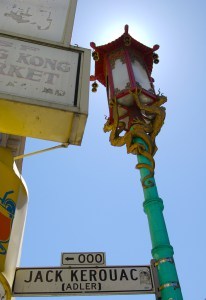
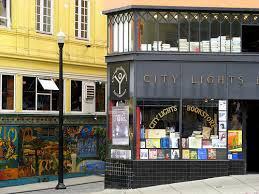 Jack Kerouac Alley in San Francisco is a one-way lane that connects Grant and Columbus. It is named after the Beat Generation who used to frequent the nearby pub and bookstore.
Jack Kerouac Alley in San Francisco is a one-way lane that connects Grant and Columbus. It is named after the Beat Generation who used to frequent the nearby pub and bookstore.
Jack Kerouac, William S. Burroughs and Allen Ginsberg set the tone for the Italian enclave in North Beach during the mind-expansion sixties. It is here where the romance comedy, Stumptown Daze, has its beginning.
In 1988, Lawrence Ferlinghetti, who was the co-founder of City Lights Publishing, proposed the dedication of the alley to the Board of Supervisors. The passageway is known for its colorful graffiti and engraved Western and Chinese poems. Below is a sampling of this genius.
Jack Kerouac Alley, poets and verses:
The air was soft / the stars so fine / the promise of every cobbled alley so great—Jack Kerouac.
Poetry is the shadow cast by our streetlight imagination—Lawrence Ferlinghetti.
The free exploring mind of the individual human is the most valuable thing in the world—John Steinbeck.
The post Jack Kerouac Alley in San Francisco appeared first on John McCarty.
March 3, 2016
Morningstar Ranch in Occidental, CA
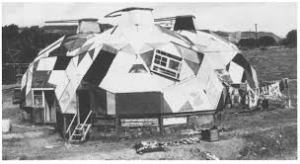 Morningstar Ranch in Occidental, CA was an active open land counterculture commune (also known as The Digger Farm). In my upcoming crime novel, Don’t Stop the Music, two youths flee from the clutches of a San Francisco mobster and hide in the redwood hills of rural northern California at the enclave.
Morningstar Ranch in Occidental, CA was an active open land counterculture commune (also known as The Digger Farm). In my upcoming crime novel, Don’t Stop the Music, two youths flee from the clutches of a San Francisco mobster and hide in the redwood hills of rural northern California at the enclave.
Morningstar was part of the changing society of young adults in the 1960’s that traveled back and forth between the Haight-Ashbury and Sonoma County. The commune was established by musician and satirical comedian, Lou Gottlieb.
Morningstar Ranch in Occidental, A Brief History:
Lou Gottlieb earned a Ph.D. in music from U.C. Berkeley and later became the bassist and lofty comic spokesperson for the musical trio, The Limeliters. After a brief stint reviewing concerts for the “San Francisco Chronicle,” he moved to his 30-acre ranch in Sonoma County in 1966 where he referred to himself as the “resident piano player.” Lou coined the acronym LATWIDNO (Land Access To Which Is Denied No One) for everyone coming to Morningstar. Life was unfettered, living off the land and providing the Diggers with free food for their outlets back in the City. The Ranch was in existence for a very short time due to the many complaints of neighbors. One such person relays the story of how a naked Lou walked to the fence line and as a greeting, scribbled “L-O-V-E” on the dusty belly of his pregnant partner.
Lou attempted to leave the land he owned to God. A series of court appeals culminated in the 9th district court ruling that he could not. The ruling centered around the fact that if God was named owner on a quit claim deed, there would be no recourse for the collection of property taxes. The finding, therefore, was that God has no property rights in the state of California. The Morningstar Commune frightened Ronald Reagan, then Governor of California, and he vowed to remove it from the face of the earth.
The post Morningstar Ranch in Occidental, CA appeared first on John McCarty.
Meet the Author

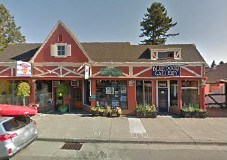
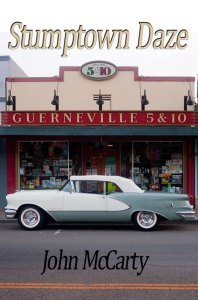 Meet the author of Stumptown Daze this coming Friday, March 4th. John McCarty will be at the Russian River Art Gallery on Main Street between 4p.m. and 6p.m. as part of the First Friday Art Walk in Guerneville, a unique little town adjacent to the Russian River.
Meet the author of Stumptown Daze this coming Friday, March 4th. John McCarty will be at the Russian River Art Gallery on Main Street between 4p.m. and 6p.m. as part of the First Friday Art Walk in Guerneville, a unique little town adjacent to the Russian River.
The community is spicing up its already zesty local flavor with a monthly celebration. Art, food, wine and music is the theme of the Art Walk where dozens of art galleries, studios and businesses all within a three-block radius host receptions with art exhibits.
The event, free and open to the public, also includes complimentary wine and snacks. On the street, vendors sell arts and crafts, and musicians and performance artists entertain.
“With Guerneville being more eclectic and funky, we have opened studios and the traditional galleries, but we have also invited street artists and musicians,” said Otto Willis, one of the organizers of Art Walk.
Meet the Author:
John McCarty is a fourth generation San Franciscan and a retired history instructor. His novels reflect both of these elements with an emphasis on historical fiction. Stumptown Daze is a romance comedy set back in the year 1960. Walter, a sixty-five-year-old dementia patient, and his Rotuman caregiver, Lani, live in a bungalow on the east side of San Francisco’s Telegraph Hill. Walter, with Lani in tow, flee his conniving daughter who cares more about his wealth than his well-being. Walter and Lani end up at Murphy’s Guest Ranch in Guerneville, California, where Lani forms an awkward relationship with Jake, a germaphobe dessert chef. Lani and Jake must put aside their differences in order to fend off the pursuing daughter as well as to find the senior who has gone AWOL in search of love.
See you at the Russian River Art Gallery this Friday. Cheers!!!
therussianriverartgallery.com/
The post Meet the Author appeared first on John McCarty.
March 1, 2016
Human Be-In, Haight Ashbury 1967
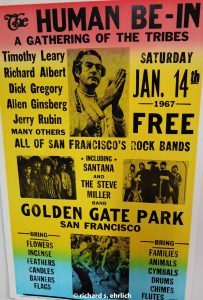 The Human Be-In was a Haight Ashbury event in Golden Gate Park in January of 1967, announcing the upcoming Summer of Love. This is the setting for the beginning of my next historical crime novel, Don’t Stop the Music. At the time I lived in the Haight and witnessed first hand the counterculture movement. We were angry at the status quo, rejecting the illegal war in Vietnam, segregation, and the middle-class morality.
The Human Be-In was a Haight Ashbury event in Golden Gate Park in January of 1967, announcing the upcoming Summer of Love. This is the setting for the beginning of my next historical crime novel, Don’t Stop the Music. At the time I lived in the Haight and witnessed first hand the counterculture movement. We were angry at the status quo, rejecting the illegal war in Vietnam, segregation, and the middle-class morality.
Human Be-In, A Brief History:
The Human Be-In got its name from combining humanist values with the scores of sit-ins at college campuses and southern lunch counters. The event was announced as a gathering of tribes to protest a new California law banning the use of the psychedelic drug LSD that had been put into effect the previous year.Timothy Leary set the tone for that afternoon with his famous phrase “Turn on, tune in, drop out”. Poets like Allen Ginsberg and Michael McClure also took the podium. Dick Gregory, Lawrence Ferlinghetti and Jerry Rubin were also in attendance, lending their satirical wit to the festival. The Hells Angels, at the peak of their outlaw reputation, provided free security and corralled lost children.` Jefferson Airplane, Janis Joplin, Big Brother and the Holding Company, and The Grateful Dead all lived within blocks of each other and played at the event. Underground chemists provided large quantities of “White Lightning” LSD to the gathering masses. The 30,000 people that showed up that day would not have imagined what it was introducing to the nation. The following summer that number would quadruple as teenagers and returning vets and curiosity seekers descended upon the neighborhood. A battle soon ensued between idealists and downtown officials who threatened to level entire districts in order to save the City from the unholy music.
travel.cnn.com/author/richard–s–ehrlich/
The post Human Be-In, Haight Ashbury 1967 appeared first on John McCarty.
February 26, 2016
Johnson’s Beach in Guerneville
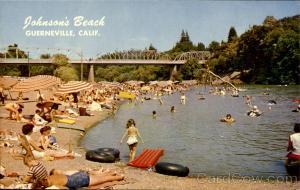 Johnson’s Beach in Guerneville, California, is the site for a scene in the 1960 novel, Stumptown Daze, where our devilish dementia patient, Walt, and his caregiver, Lani, are taking in all the fun. A lumpy kid with a penchant for chocolate and death harass the older gent with questions about the hereafter, forcing Walt and Lani to board the River Queen and seek solace upstream.
Johnson’s Beach in Guerneville, California, is the site for a scene in the 1960 novel, Stumptown Daze, where our devilish dementia patient, Walt, and his caregiver, Lani, are taking in all the fun. A lumpy kid with a penchant for chocolate and death harass the older gent with questions about the hereafter, forcing Walt and Lani to board the River Queen and seek solace upstream.
As a fourth generation City kid, this is where my parents took my sisters and me to escape the bitter July fog atop Market Street. Mark Twain’s quote still applies today: “The coldest winter I ever spent was a summer in San Francisco.” What a relief it was back in the sixties to know that the sun did indeed appear beyond the rainbow of Marin County’s Waldo Tunnel.
Johnson’s Beach, A Brief History:
A Russian River tradition for nearly a century, Johnson’s Beach has been a favorite summer spot for Sonoma County locals and visitors alike. Sunning, swimming and floating is as much a Sonoma County pastime as wine tasting and strolling through the redwoods. Johnson’s was started by Gertie and Ernie Johnson around 1918. A campground and rustic tent cabins were added in the 1920’s. In 2015 Claire Harris and his family sold Johnson’s after forty-eight years of management. Claire was born in Guerneville in 1920 at the west end of town on a prune ranch behind the old Cutting School. His clan also operated Rio Nido during its glory years of the Big Band and Rock ‘n’ Roll eras.
The post Johnson’s Beach in Guerneville appeared first on John McCarty.
February 24, 2016
The River Queen at Johnson’s Beach
The River Queen ferried passengers between Johnson’s Beach and Rio Nido, a distance of more than one mile. I have used this scene in a couple of my historical fiction novels–Memories That Linger and Stumptown Daze–remembering those childhood adventures that often got us into a lot of trouble. But in reality, the banks of the lower reaches of the Russian River near Guerneville in rural Sonoma County were relatively safe in those days, at least in the fifties.
My father would drop my mother, two sisters and myself off for the entire summer while he visited on the weekends from his job in San Francisco. Relatives and friends would join us for the wholesome fun that this vacation wonderland had to offer. The feeling of freedom was welcomed with open arms by kids of all ages. We rode our bicycles through the redwood canyons until supper time after which we would listen to a live band at one of the five local dance halls. The times began to change with the introduction of 1960 and the radical changes of the protest movement. Charles Manson, LSD, cabin squatters, and rage invaded the area, leaving a legacy of torment and confusion. But we always had the River Queen.
River Queen, A Brief History:
From the late forties to the late sixties, Captain M.B. “Bid” Greene offered a leisurely cruise on the Russian River between Guerneville and Rio Nido. The voyage cost ten cents one way, fifteen cents round trip. To the delight of his passengers, “Cruising Down the River” was played over and over until journey’s end. Bid’s wife would accompany him, sitting directly behind the wheel, knitting or reading a favorite book. One of my favorite memories is riding aboard the River Queen to the Independence Day celebration at Johnson’s, which was usually held on any day but July 4th to take advantage of a pyrotechnic’s discount. After disembarking, the family would secure a place on the pebbled shore and watch a fireworks display that seemed to literally rain down upon us. With the finale, we would rush back to our captain to claim a seat for the return trip to Rio Nido. Bid Green died in Sebastopol, California, on October 2nd, 1978. He will always be remembered for his broad smile and gracious spirit.
www.russianriverhistory.org/
The post The River Queen at Johnson’s Beach appeared first on John McCarty.
February 22, 2016
Angelo’s Resort in Monte Rio
In the historical fiction novel, Stumptown Daze, we go back to 1960 and find our two lovers, Lani and Jake, visiting Angelo’s Resort (also formerly known as Angelo’s Sandy Beach Resort and Restaurant) in the backwater town of Monte Rio, California. Jake, a germaphobe, is repulsed by the sight of customers feeding raccoons and he goes on a tantrum. Needless to say, this causes newfound friction for our offbeat couple.
I remember my parents taking us kids to Angelo’s during the 1950’s (see image of dining-dancing lounge above). My favorite dish to order as a ten-year-old was veal parmesan. I would scrape off the cheese and eat it and leave the rest for the local critters. This bewildered my mom to no end not to mention my father who had to fork out the money for such a waste.
Angelo’s Resort, A Brief History
Angelo’s Resort, also known as Angelo’s Casino, was located on River Boulevard in Monte Rio and dates back to the 1940’s. It housed several slot machines and featured an Italian menu of excellent quality and better bargains. Patrons would sway to the sound of live music, often a single pianist belting out a Big Band tune. A plate-glass window behind the bar allowed visitors to view the Russian River as well as to witness the nightly feeding of the raccoons. The animals (not too unlike myself) would strip the spaghetti of its sauce before eating the treat. It is presently known as Grandma’s House and is being used as a year-round vacation rental.
The post Angelo’s Resort in Monte Rio appeared first on John McCarty.

